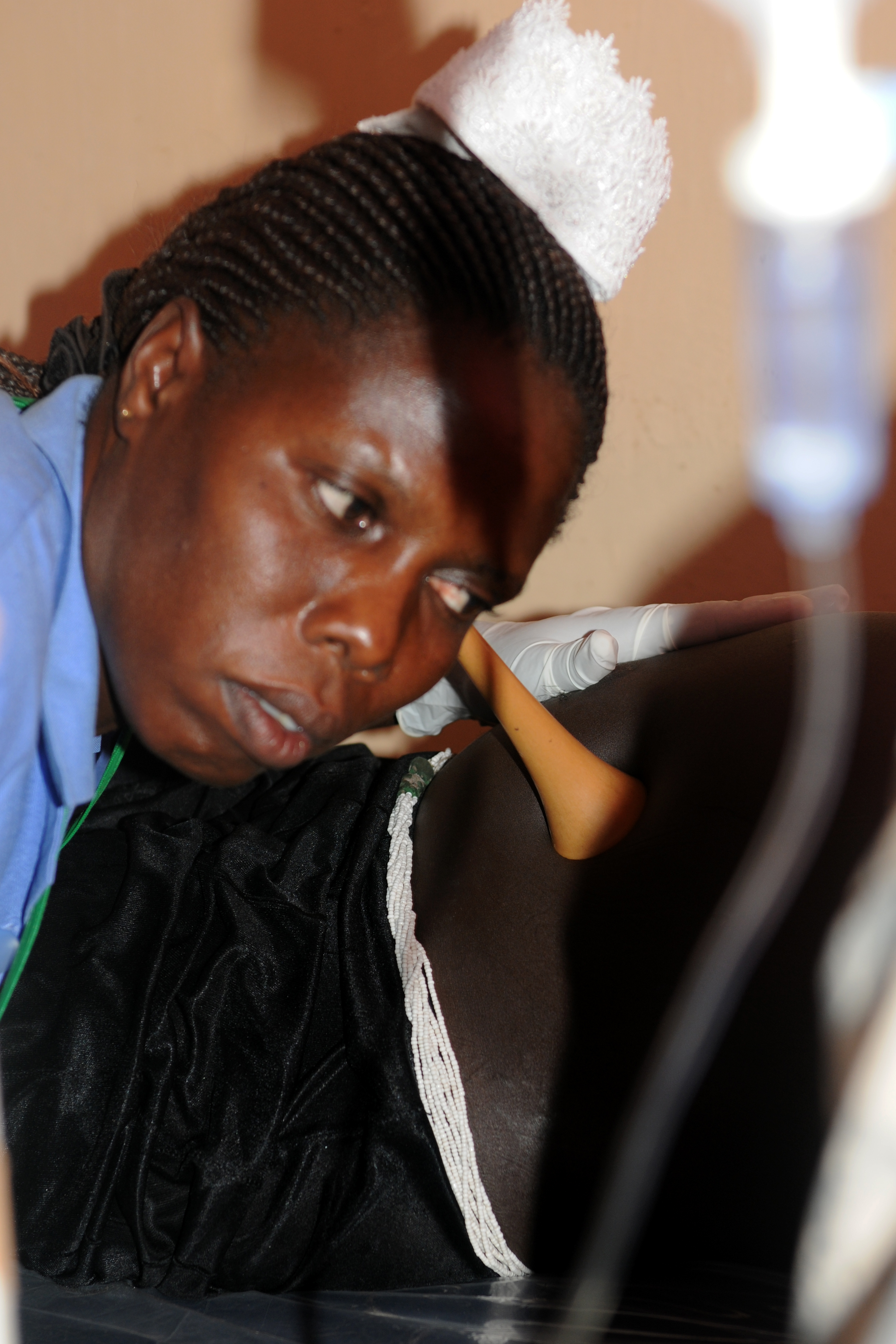Pinard Horn on:
[Wikipedia]
[Google]
[Amazon]

 A Pinard horn is a type of
A Pinard horn is a type of

 A Pinard horn is a type of
A Pinard horn is a type of stethoscope
The stethoscope is a medicine, medical device for auscultation, or listening to internal sounds of an animal or human body. It typically has a small disc-shaped resonator that is placed against the skin, with either one or two tubes connected t ...
used to listen to the heart rate of a fetus
A fetus or foetus (; : fetuses, foetuses, rarely feti or foeti) is the unborn offspring of a viviparous animal that develops from an embryo. Following the embryonic development, embryonic stage, the fetal stage of development takes place. Pren ...
during pregnancy. It is a hollow horn, often made of wood or metal, about long. It functions similarly to an ear trumpet
An ear trumpet is a tubular or funnel-shaped device which collects sound waves and leads them into the ear. They are used as hearing aids, resulting in a strengthening of the sound energy impact to the eardrum and thus improved hearing for a deaf ...
by amplifying sound. The user holds the wide end of the horn against the pregnant woman's abdomen, and listens through the other end.
History
The Pinard horn was invented by Dr.Adolphe Pinard
Adolphe Pinard (4 February 1844 – 1 March 1934) was a French obstetrician who was a native of Méry-sur-Seine. He practiced medicine in Paris, where he was an assistant to Étienne Stéphane Tarnier (1828–1897) and a professor of obstetrics, ...
, a French obstetrician
Obstetrics is the field of study concentrated on pregnancy, childbirth and the postpartum period. As a medical specialty, obstetrics is combined with gynecology under the discipline known as obstetrics and gynecology (OB/GYN), which is a surgi ...
, during the 19th century. Pinard was an early supporter of advancements in prenatal care
Prenatal care, also known as antenatal care, is a type of preventive healthcare for pregnant individuals. It is provided in the form of medical checkups and healthy lifestyle recommendations for the pregnant person. Antenatal care also consists of ...
, including closer fetal health monitoring. The invention came about in 1895.
Current use
Pinard horns continue to be used around the world, particularly bymidwives
A midwife (: midwives) is a health professional who cares for mothers and newborns around childbirth, a specialisation known as midwifery.
The education and training for a midwife concentrates extensively on the care of women throughout their ...
, and also by doctors and nurses. It provides an alternative to the more expensive Doppler foetal monitor. Another alternative is the fetoscope, which is a stethoscope designed for auscultating fetuses. Below is a quote from a midwife in Mexico describing the Pinard horn:
A Pinard horn may be used to determine the position of the fetus. A Pinard horn is more precise than a Doppler device for this purpose. A Doppler device detects a heart tone further away from the location of origin. A Pinard horn must be pressed to a location very close to the fetal heart in order to detect it, providing a more accurate indication of fetal position. A doctor, nurse, or midwife can also use palpation
Palpation is the process of using one's hands to check the body, especially while perceiving/diagnosing a disease or illness. Usually performed by a health care practitioner, it is the process of feeling an object in or on the body to determine ...
and auscultation
Auscultation (based on the Latin verb ''auscultare'' "to listen") is listening to the internal sounds of the body, usually using a stethoscope. Auscultation is performed for the purposes of examining the circulatory system, circulatory and resp ...
to determine fetal position.
Current Models
The Pinard Horn has been made out of wood, metal, and plastic. It has taken the form of a conventional stethoscope, where instead of holding the horn between your ear and the pregnant body, there are earpieces and the horn is attached to a cable.See also
*Doppler ultrasound
Doppler ultrasonography is medical ultrasonography that employs the Doppler effect to perform imaging of the movement of tissues and body fluids (usually blood), and their relative velocity to the probe. By calculating the frequency shift of a ...
* Fetal heart rate
* Fetoscopy
Fetoscopy is an endoscopic procedure during pregnancy to allow surgical access to the fetus, the amniotic cavity, the umbilical cord, and the fetal side of the placenta. A small (3–4 mm) incision is made in the abdomen, and an endoscope i ...
References
{{Reflist Diagnostic obstetrics and gynaecology Medical equipment Midwifery